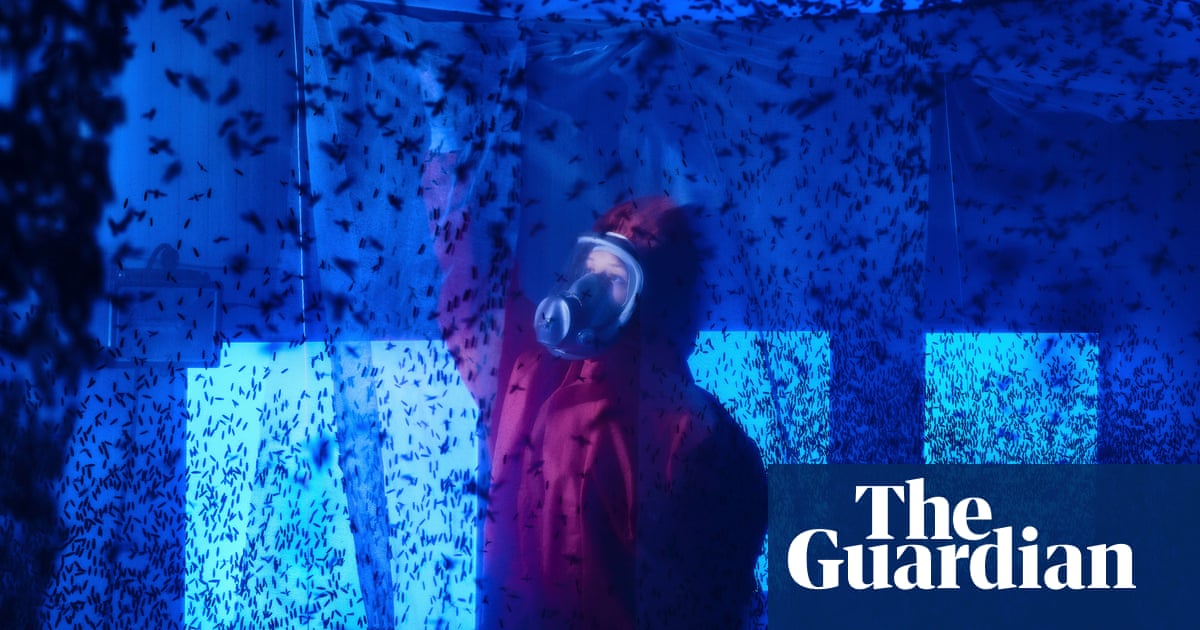There is an urgency to the theme of this year’s Fotografia do Porto, Amanhã Hoje (Tomorrow Today). It wants us consider how we want the world to look in the future and to start making changes now. The environmental crisis and the role played by society are the burning issues in which photography is revealed as a force for change, not just a means to document it.
This is a small operation with a big heart and an ambitious raison d’être. There is nothing flashy or corporate in sight, and all 16 exhibitions in venues across the city are free. The co-director Virgílio Ferreira says most of the investment is spent in the invisible areas: paying honest fees and not wasting money on expensive framing. Instead, images are projected or displayed on screens to create engaging and ingenious exhibitions. There is also a refreshing lack of hierarchy – curators and artists, well-known and emerging, work in collaboration with local communities, scientists, and government bodies.
In the series Future Studies, Luca Locatelli photographs landscapes that have been altered through farming and industry on a massive scale. He often uses aerial photography to reveal views that are inaccessible from the ground. The images of vast greenhouses and a geothermal power plant are jaw-dropping for their enormity.
Locatelli is interested in how technology is being used to increase the supply of food and generate energy in a world moving away from fossil fuels. The photographs from inside these structures reveal a clinical and truly dystopian view of the future in which humans, if present at all, are wearing hazmat suits.
Kathrin Stumreich’s video and sound installation, recorded at the futuristic-looking Ivanpah concentrated solar power plant in the Mojave desert in the US, sizzles with images of puffs of smoke against blue skies and the sound of crackling pops. It takes a moment for the reality of what those images and sounds are to sink in: they are birds burning up in the intense heat.
There are more than 170,000 motorised mirrors that reflect the sun’s rays on to three central solar towers where temperatures reach up to 1,000F (535C). The birds are drawn in by insects that have been attracted to the light.
For the exhibition Vivificar (to live, to stay), three photographers were sent to live with families in three different parts of the rural Douro region outside Porto with the aim of being completely immersed in the local culture.
The resulting work is rich and unexpected, even for the artists themselves. In the summer, after the festival is over, the three projects will be exhibited in the communities in which they were created in a gesture that completes the circle.
With one of the families in Sabrosa, Lara Jacinto discovered a community in a state of change. The lack of jobs had driven young people to seek work and opportunities elsewhere, leaving behind a small and ageing population. The government has tried to solve the problem by repopulating the area with migrants from countries as distant as Ukraine, Angola and Nepal.
Jacinto’s portraits show the isolation and restlessness that this diverse group have experienced as they struggle to become part of a community that has lost its identity. Portugal’s recent elections saw the far-right anti-immigration Chega party making record gains, leaving Sabrosa’s new community in an even more precarious position.
The importance of community and exchange is the thread that binds these diverse exhibitions. Joana Dionísio explores social activism in the Geopark Algarvensis, where local communities are brought together to protect the ecology and cultural history of the area.
This idea of building sustainable grassroot networks is nicely contrasted by this exhibition’s installation inside a metro station. The images are beguiling. They show people tenderly helping each other and doing manual conservation work. The layout of the exhibition means that commuters have to walk, or rush, through the images and will probably see something new on every journey.
Photographers are also celebrated as actors in the fight against state-driven environmental and social destruction. Claudia Andujar, who is one of the artists featured in Lightseekers, has spent her life tirelessly campaigning for Brazil’s indigenous Yanomami people, whose lives in the Amazon have been devastated by the expansion of roads and agriculture.
In 1992 her images helped bring about the demarcation of Yanomami territory, but the Yanomami are still under threat. Thyago Nogueira, who looks after her archive, says that what is happening today is as “bad and as violent” as in the past because “the lives of the Yanomami are very connected to the frontline of capitalism because they have gold in their territory.”
When she first went to live with the Yanomami, Andujar found that straight photojournalism could not translate the experience of being there, which was rooted in shamanic rituals, so she began to experiment with film to create images that conveyed feeling.
Now at the age of 93, Andujar uses that same creative approach with images that she mines from her archive. By re-photographing and symbolically using gold tints she continues to educate people about the Yanomami.
There are many more exhibitions worth highlighting – this feels like a very small bite of a rich and intellectually stimulating biennial that will provoke conversations and collaborations long after it has ended.
